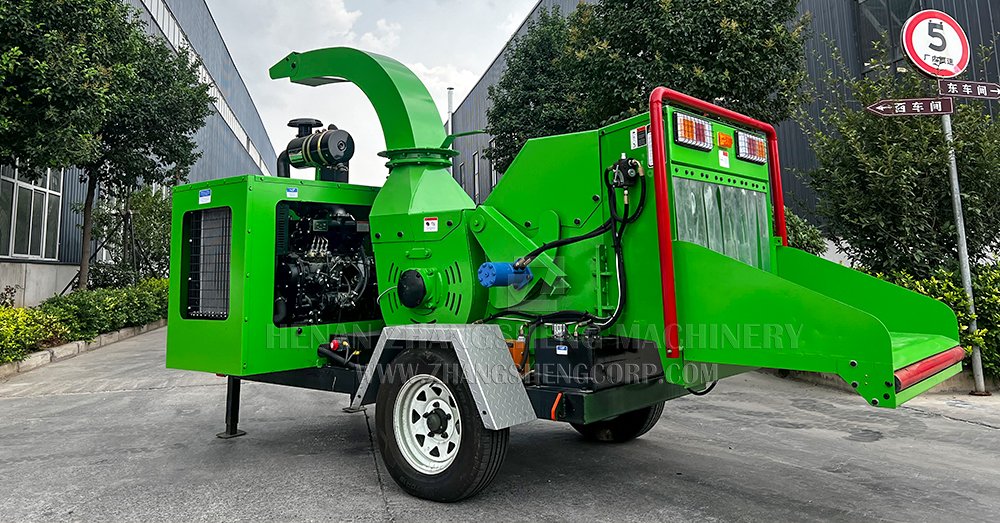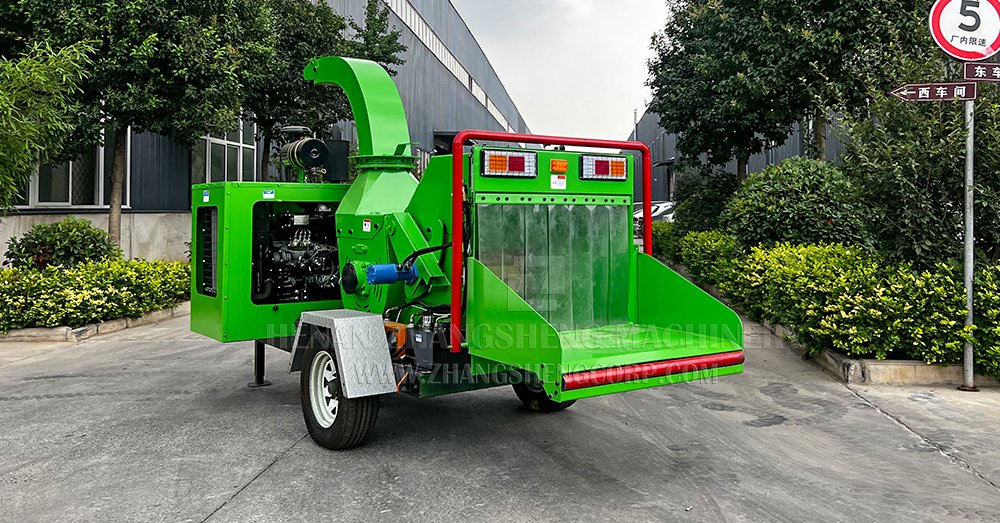Wood chippers are powerful tools, but they can cause serious harm if you are not careful. Many accidents happen because people don't follow safety rules. This makes a simple job dangerous.
Using a wood chipper safely means understanding its dangers, always wearing the right safety gear, and following correct operating steps. Regular checks and proper maintenance are also very important for safety.
These machines help us a lot, but we must respect their power. Learning about wood chipper safety is not just a good idea; it is necessary for anyone who uses or works near these machines. Let's look at how to keep safe.
How dangerous are wood chippers?
Worried about using a wood chipper? These machines are strong and can be risky if you don't know the dangers.

Wood chippers are very dangerous if not used with great care. The main risks come from the fast-moving cutting parts and materials being pulled in or thrown out, which can cause severe injuries.
I have been in this business for 22 years, and I have seen how important safety is. Wood chippers are designed to break down tough wood, so they have a lot of power. The biggest dangers are the machine pulling you in, getting hit by fast-moving parts, or being struck by material thrown out. Inside the chipper, the cutting drum can rotate at speeds up to 2200 rpm 23456. Contact with this spinning drum or the blades is extremely dangerous. Feeding material incorrectly can lead to kickback or pull-in. The infeed mechanism typically has a mode to go forward, reverse, or stop 123456, which is a safety feature, but the initial pull is strong. Objects other than wood, like metal or stones, can be thrown out with great force if they enter the chipping chamber. These can cause severe injury to the operator or anyone nearby. Noise levels are very high, which requires proper hearing protection to prevent long-term damage. Lastly, any loose clothing, hair, or jewelry can get caught by moving parts on the machine, such as belts, pulleys, or the feed rollers, leading to serious injury. Knowing these specific risks helps you stay alert and follow safety rules more carefully.
how to safely use a wood chipper?
Want to use a wood chipper without getting hurt? Following the right steps every time is the best way to stay safe.
To safely use a wood chipper, always wear Personal Protective Equipment (PPE), check the machine before starting, feed materials carefully, and never put your hands or feet into the chutes while it's on.
From my experience, a safety routine is your best friend when working with wood chippers. It is not just about knowing the rules; it's about doing them every single time. Before I even start the engine, I walk around the machine. I check that all the safety guards are in place and not damaged. I look at the blades to make sure they are sharp and properly installed. Dull blades make the machine work harder and can cause dangerous kickback. I also clear the area around the chipper. I remove any rocks, tools, or pieces of wood that someone could trip over. I make sure no people, especially children or pets, are too close to the machine. Then, I put on all my safety gear: hard hat, safety glasses, hearing protection, thick gloves that fit well, and sturdy boots. Loose gloves can be a hazard themselves if they get caught. When I start the chipper, I let it get up to full speed before I start feeding wood. When feeding material, I always feed the butt end first. The machine's hydraulic forced feed system pulls the wood in 123456. I use the feed speed control, which often has 10 steps 23456, to match the material. I let the machine do the work; I do not push the wood hard into the infeed port. If a piece of wood is too short, I use a push stick, never my hands or feet. If something gets stuck, I know to use the feed mechanism mode to reverse the rollers or stop them 123456. On some machines, the conveyor also has independent control to go forward, reverse, or stop 1. This is a critical safety feature to clear jams without getting near the cutting drum. I always turn off the engine completely and wait for everything to stop before trying to clear a serious clog by hand.

Wood Chipper Safety and Operations Guide to Chip Away Risks?
Thinking about more than just basic operation for safety? A full approach includes knowing what to feed, machine care, and operator readiness.
A complete wood chipper safety guide involves choosing the right materials, doing regular maintenance, and ensuring operators are well-trained to reduce all potential risks effectively.
Safety with wood chippers goes deeper than just how you operate it on a given day. It's about a whole system of care and attention. We build our TIROX machines to be robust, but user practices are just as critical. One big part of safety is knowing what you can put into the chipper. Wood chippers are made for processing wood. Trying to chip things like metal, rocks, or concrete can cause major damage to the machine and create dangerous flying debris. Even wood with nails or staples can be a problem. I always check the material before feeding it to make sure it's clean wood within the maximum size the chipper can handle 456. The type of feeding is usually horizontal hydraulic forced feeding 23456. Some of our machines have a smart feeding system 1456. This system watches how hard the machine is working. If it senses the machine is getting overloaded, it can automatically slow down or even stop the feeding 1. This helps prevent clogs, which is safer because you don't have to clear a jam as often. Keeping the machine in good shape is also key to safety. Regular maintenance includes checking the blades often and keeping them sharp. Sharp blades work better and are safer. We also check the oil levels, like the ones shown on the intelligent control panel 1, and look for any leaks or worn parts. Doing the scheduled maintenance helps prevent unexpected breakdowns that could happen at a bad time. Finally, proper training for anyone using the chipper is a must. They need to know how to start and stop it, how to feed safely, and what to do in an emergency.
Conclusion
Wood chipper safety is serious. Always follow guidelines for operation, PPE, materials, and maintenance. This protects you and keeps your equipment running well for years.


